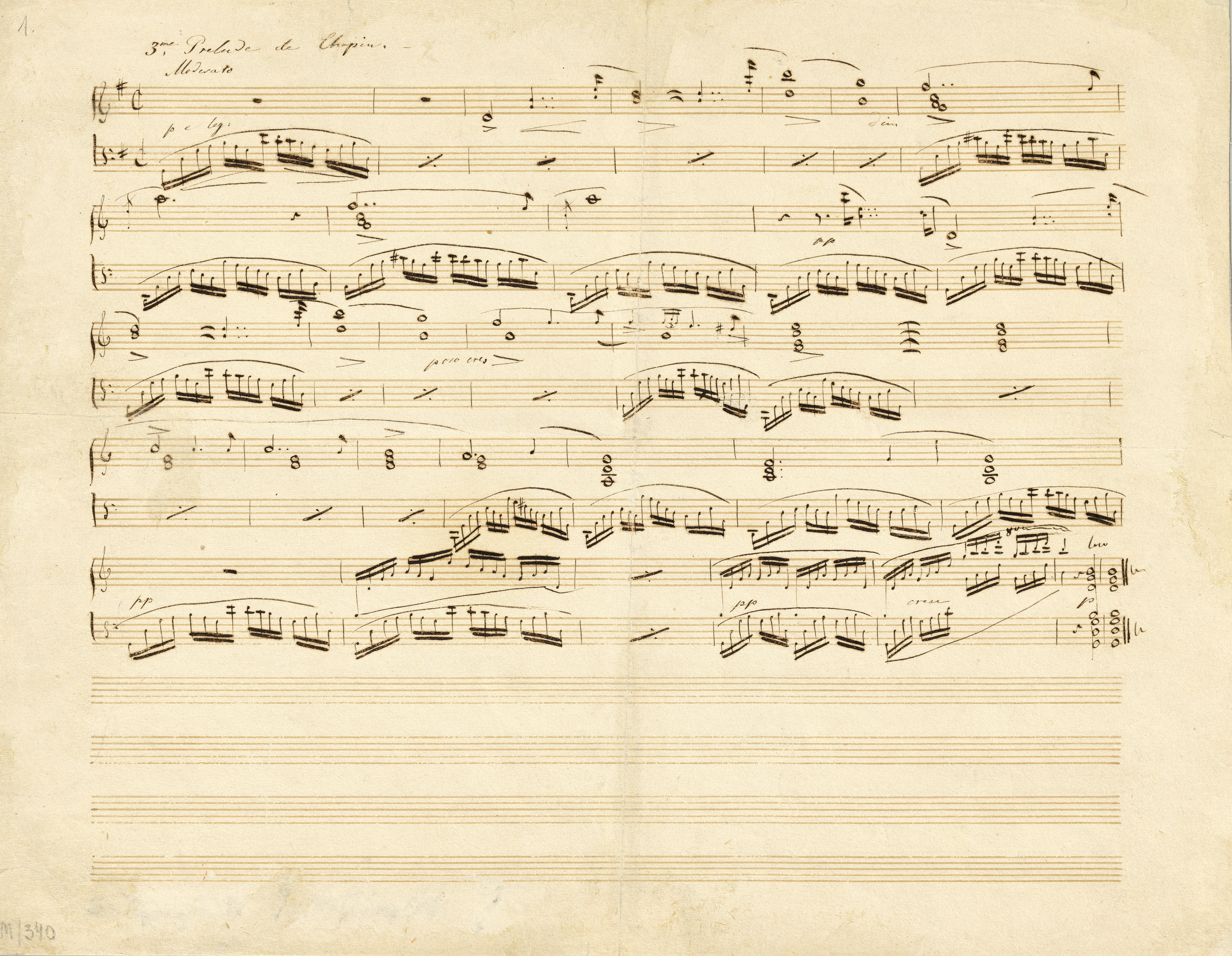Op. 2, Variations in B♭ major
Op. 10, 12 Etudes
Op. 11, Concerto in E minor
Op. 21, Concerto in F minor
Op. 22, Polonaise in E♭ major
Op. 24, 4 Mazurkas
Op. 25, 12 Etudes
Op. 26, 2 Polonaises
Op. 27, 2 Nocturnes
Op. 28, 24 Preludes
Op. 30, 4 Mazurkas
Op. 35, Sonata in B♭ minor
Op. 50, 3 Mazurkas
Op. 63, 3 Mazurkas
Op. 64, 3 Waltzes
(Op. 4), Sonata in C minor




Op. 28 No. 3, Prelude in G major
In b. 8, 10 and 11, one can see in A crossings-out in the L.H. part, which was initially written an octave higher. Therefore, one could conclude that Chopin hesitated in which register he could put a figuration based on a D major chord; he changed his mind twice – he started from a lower position, which is evidenced by FCI, and then moved the semiquavers an octave higher in A, to eventually return to the initial concept. However, other scenarios are also likely:
- the first version written in A could be the initial one – Chopin could have copied it from a lost draft by mistake, although he was already determined to use a lower register (FCI);
- it cannot be ruled out that there was no other version; in such a scenario, the initial notation of A would be simply a mistake. That possibility is suggested by the last note of the crossed-out version of b. 8, b, which would have created a melodic combination with a, but it is not justified in the case of a combination with A. Mistakes consisting in a notation in a wrong octave would happen to Chopin when he was changing clefs, e.g. in the Scherzo in C
 Minor, Op. 39, b. 345-347, as well as in the Ballade in G Minor, Op. 23, b. 159-160.
Minor, Op. 39, b. 345-347, as well as in the Ballade in G Minor, Op. 23, b. 159-160.
Compare the passage in the sources »
category imprint: Corrections & alterations; Source & stylistic information
issues: Corrections in A, Deletions in A
notation: Pitch

